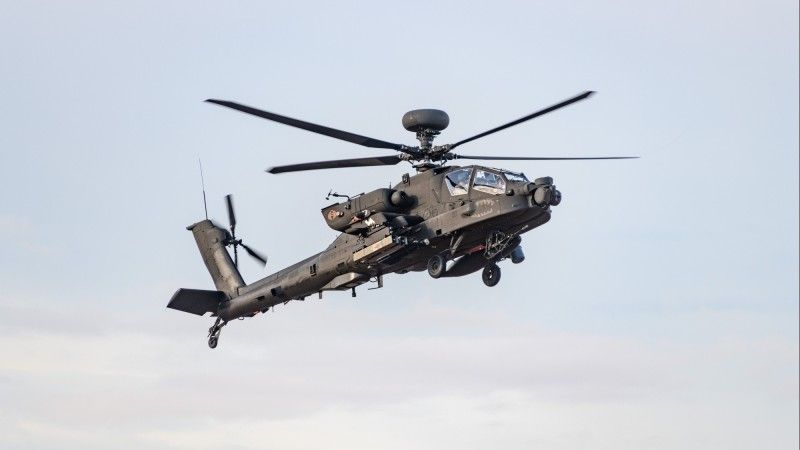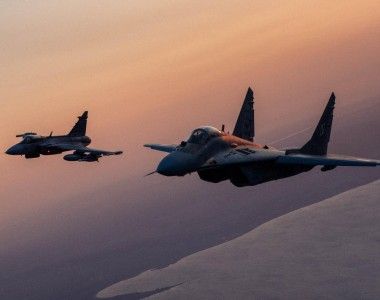Polish Helicopter Gunships Will Strike Deeper

Photo. US Army
The Polish Armed Forces are interested in further expanding the range of strike capabilities for their helicopters, including long-range weapons. Today, however, a major challenge is maintaining the current fleet, as it must conduct operational tasks alongside training processes.
The future, and the difficult present challenges, of the Polish helicopter fleet were the subjects of discussion during the panel “Helicopters in a Joint Defensive Operation” at this year’s Defence24 Days conference. Participants included Lt. Gen. (ret.) Edward Gruszka, former Operational Commander of the Armed Forces and currently an adviser to the Ministry of National Defence; Col. Krzysztof Zwoliński, Head of the Rotary-Wing Aviation Department of the Air Force Inspectorate; Lt. Col. Piotr Gronczyński, squadron commander from the 56th Air Base; and industry representatives: Jacek Libucha, President of PZL-Świdnik; George Adam Hodges, Business Development & Strategy, Vertical Lift Boeing; and Stéphane Le Floch, Senior Combat Marketing Segment Manager, Airbus.
Discussing the role of helicopters on the future battlefield in Central and Eastern Europe, Gen. Edward Gruszka noted that a future defensive operation there might unfold very differently than the current war in Ukraine, which has taken on a positional character. Regarding helicopter operating zones, he distinguished three main areas: the direct action zone, where threats to helicopters are greatest; the rear area, where helicopters can operate relatively freely provided there is effective protection; and the deep strike zone, where, paradoxically, helicopters may enjoy greater freedom than in the direct action zone.
Gen. Gruszka emphasized that effective use of helicopters requires at least local air superiority, and under Polish conditions, given the broad scope of modernization programs, it is also crucial to have an extensive aviation-engineering support service. The former operational commander also called, at the level of the entire Armed Forces, for streamlining the command and control system, noting that current processes take far too long.
Col. Zwoliński, for his part, underlined that developing the capabilities of Polish helicopters will, among other things, require integrating appropriate armaments that allow for precision strikes at long range and significantly improved firepower compared to earlier-generation helicopters. In that context, he confirmed that the Polish Armed Forces are interested in Spike NLOS missiles for Apache Guardian helicopters, with ranges of up to 50 km.
Before new platforms can be introduced, however, the Polish Armed Forces must continue current operations using existing equipment. This is becoming increasingly difficult due to wear and tear on older helicopters and the lack of adequate external support since the outbreak of the war in Ukraine. Current activities include not only training but also operational tasks, carried out with a very high level of personnel commitment.
Polish helicopters have been undertaking missions related to the situation on Poland’s borders and the ongoing conflict in Ukraine for about four years. Crews of the 1st Land Aviation Brigade, of which the 56th Air Base is part, have continuously served for years with great dedication. According to Lt. Col. Gronczyński, this unit is to be re-equipped with Apache Guardian helicopters. These provide very broad capabilities, not only in terms of their weapons systems but also for integrating, processing, and distributing information from both the helicopter’s own sensors (including weapons-linked radar) and external sources such as unmanned aerial vehicles. Thus, Apache Guardians will serve not only as pure strike assets but also as important nodes in joint operations, with employment methods radically different from those of existing helicopters.
The panel emphasized that introducing new platforms—strike helicopters, multirole types, and others—will require a complete overhaul of the training system so as to relieve frontline units of much of the training burden. Lt. Col. Zwoliński assured that a decision on the direction of training-helicopter acquisition will soon be announced by the Ministry of National Defence. Among Soviet-origin platforms, the Mi-17 is essentially the only type with some future potential; all others must and will be urgently replaced.
Industry representatives then took the floor on new helicopters and training.
George Adam Hodges assured listeners that the Apache Guardian will continue to evolve, integrating new systems, enhancing situational awareness, and cooperating with unmanned aerial vehicles. He noted that Apache Guardians can be particularly effective when working alongside other helicopters, Apache not only multirole types like the Black Hawk S-70i but also heavy transport CH-47 Chinooks. The latter can carry extra munitions and fuel, enabling rapid rearming and refueling of helicopters at forward arming and refueling points (FARPs) in a mobile system. This increases operational flexibility and the number of combat missions that can be flown in a given period, while also improving survivability by shortening the time spent vulnerable during resupply.
Jacek Libucha, President of PZL-Świdnik, reported that the first helicopter certified to strike targets with precision-guided munitions was not the Apache but the multirole AW149. In the case of both types of guided weapons—Hellfire anti-tank missiles and laser-guided rockets—this capability has already been confirmed, and work is underway on extending the range of one of these munitions. He added that Poland needs far more multirole helicopters; his calculations indicate up to 150 when considering the number of strike platforms. He also stressed that domestic production capability allows for more effective logistical support of the existing fleet. Świdnik’s facilities also offer a full training system for air and ground crews alongside the AW149 helicopter, including various simulators up to VR level.
Finally, Stéphane Le Floch stated that technological advances allow multirole helicopters to integrate various mission modules, making them flexibly employable for different tasks. This also applies to cooperation with unmanned systems under the MUM-T concept. In this context, he noted that Airbus’s H145M helicopter (offered primarily for training in Poland) could also perform combat and long-range strike missions using Spike ER2 anti-tank guided missiles and, in the future, possibly Spike NLOS as well. Airbus also proposes, as an option, use of existing Polish training-system elements and support for both flying and ground personnel with simulator infrastructure.



